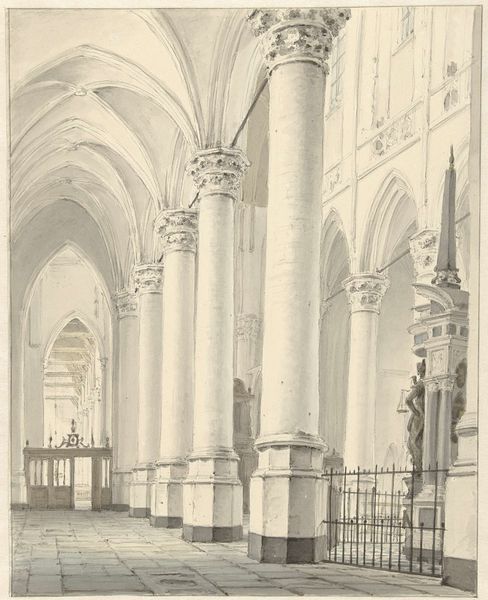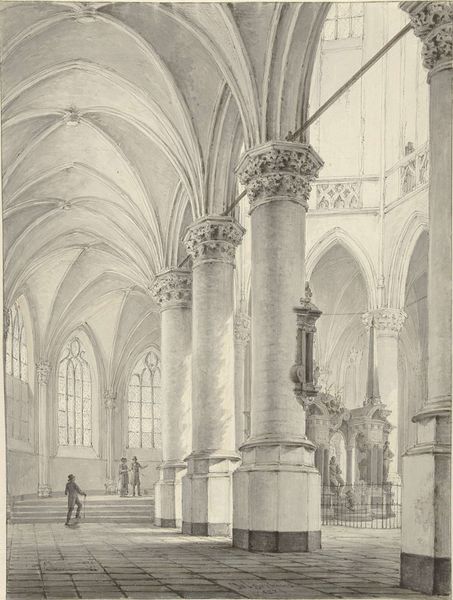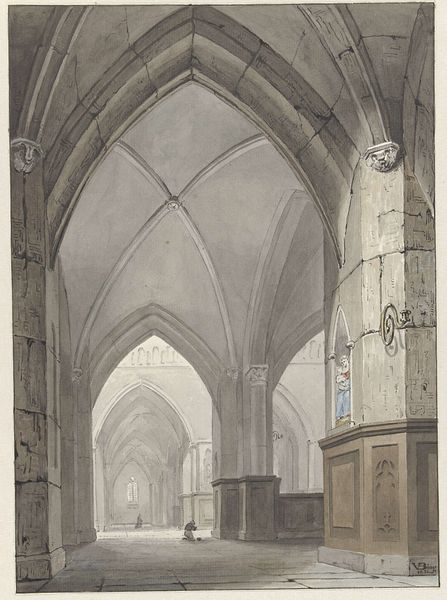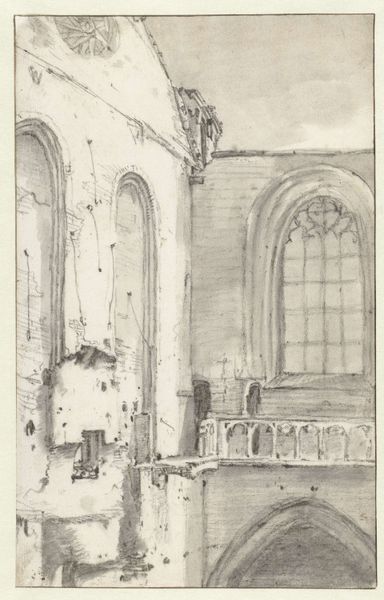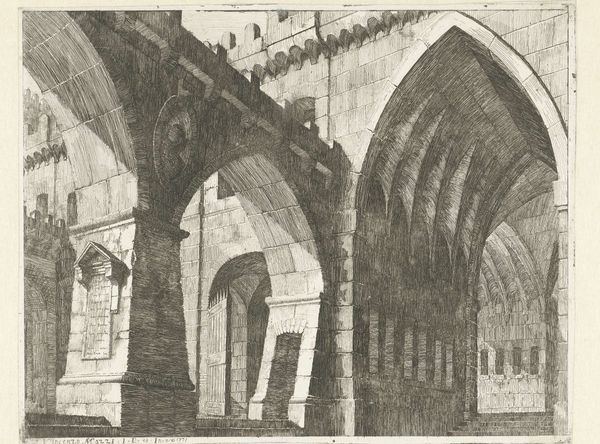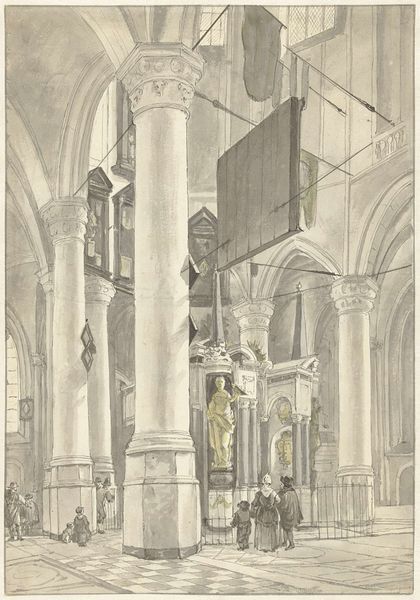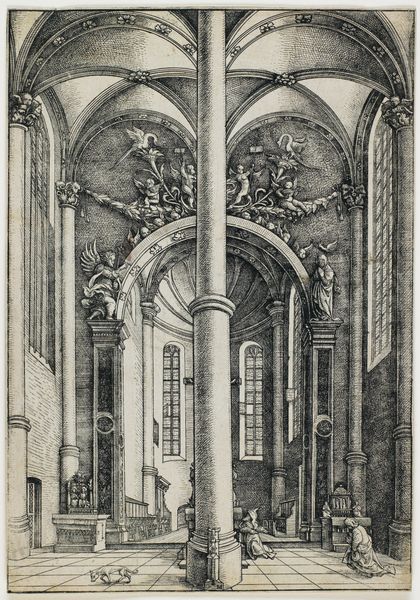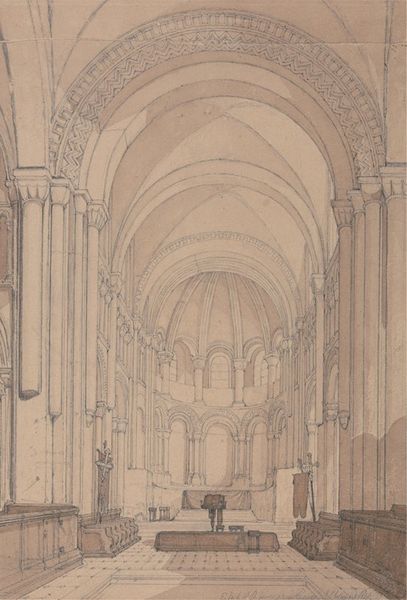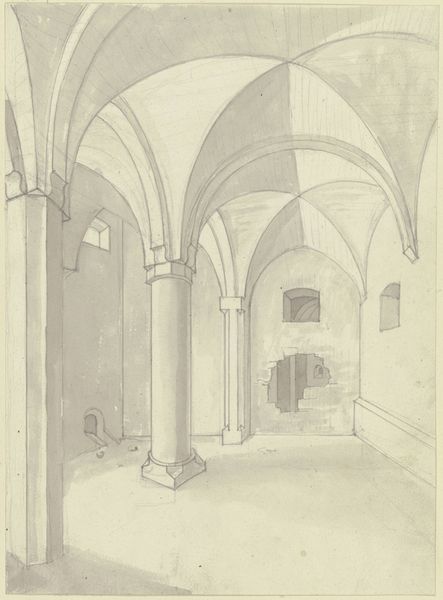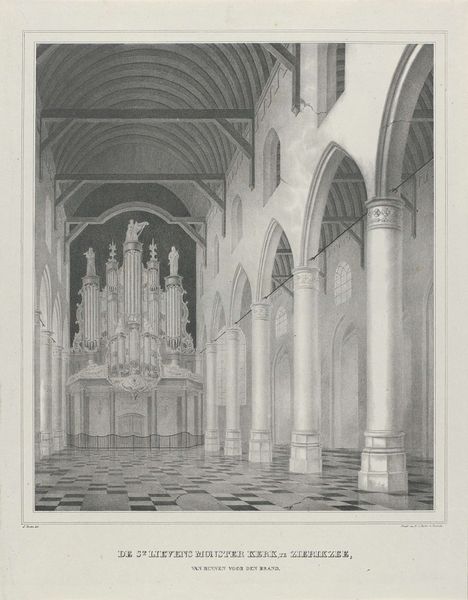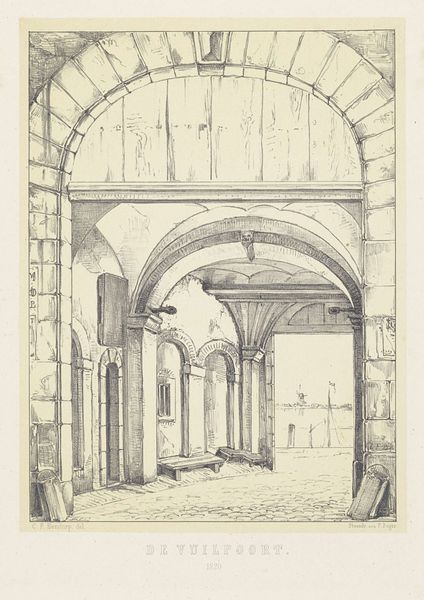
drawing, paper, ink, architecture
#
drawing
#
landscape
#
perspective
#
paper
#
ink
#
geometric
#
romanticism
#
line
#
architecture drawing
#
architecture
Dimensions: height 375 mm, width 250 mm
Copyright: Rijks Museum: Open Domain
Curator: This is Gerrit Lamberts' "The tomb of Floris V in the Grote Kerk at Alkmaar," a drawing completed in 1834 and currently held at the Rijksmuseum. It's rendered in ink on paper. Editor: Stark! The perspective really exaggerates the immense height of the church. It feels almost like a stage set. Curator: Indeed. Lamberts focuses on the play of light and shadow within the architectural space. You can appreciate that it showcases a renewed interest in national history, specifically regarding the significance of Floris V in the history of Holland. Romanticism often involved historicizing architecture. Editor: The geometry, those arches reaching upward, all those vertical lines of the Gothic architecture…it directs the eye towards a vanishing point that emphasizes this concept of infinity, while the lines showcase a structural perspective. But there's a noticeable contrast between the detailed foreground and the softer, more implied background. What is the affect here? Curator: I think it is how Lamberts navigates representing historical spaces and artifacts within the political climate of his time. This work emphasizes Dutch heritage in an era of nation-building. And that vanishing point invites viewers to reflect on historical continuity. He romanticizes both place and subject through technique. Editor: But also isolates. Despite being a church, a communal place, there's an emptiness, only an indication of the pews in the distance. Even if a formal portrait or symbolic picture are absent, I notice the work’s ability to conjure reflection upon absence or emptiness through structural perspective alone. Curator: An astute observation. Lamberts positions this monument to Floris V as a focal point of national identity during a transformative period. The composition speaks not only to architectural history, but of cultural identity. Editor: Ultimately, the formal language echoes the grand narratives of the era, even through a minimalist aesthetic, and it emphasizes the mood: quiet reflection within this place. Curator: Yes, the artwork acts as a kind of mirror, reflecting national consciousness in early 19th century Holland.
Comments
No comments
Be the first to comment and join the conversation on the ultimate creative platform.
